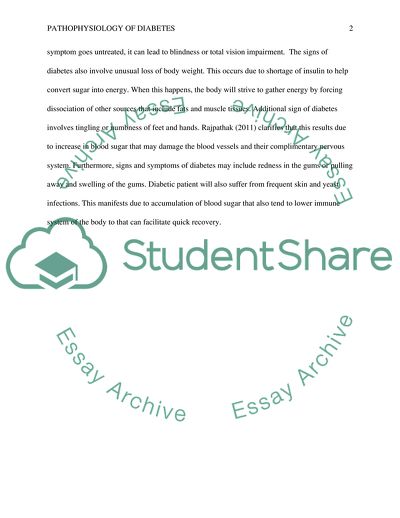Pathophysiology of the disease-Diabetes Research Paper. https://studentshare.org/medical-science/1784339-pathophysiology-of-diabetes
Pathophysiology of the Disease-Diabetes Research Paper. https://studentshare.org/medical-science/1784339-pathophysiology-of-diabetes.


